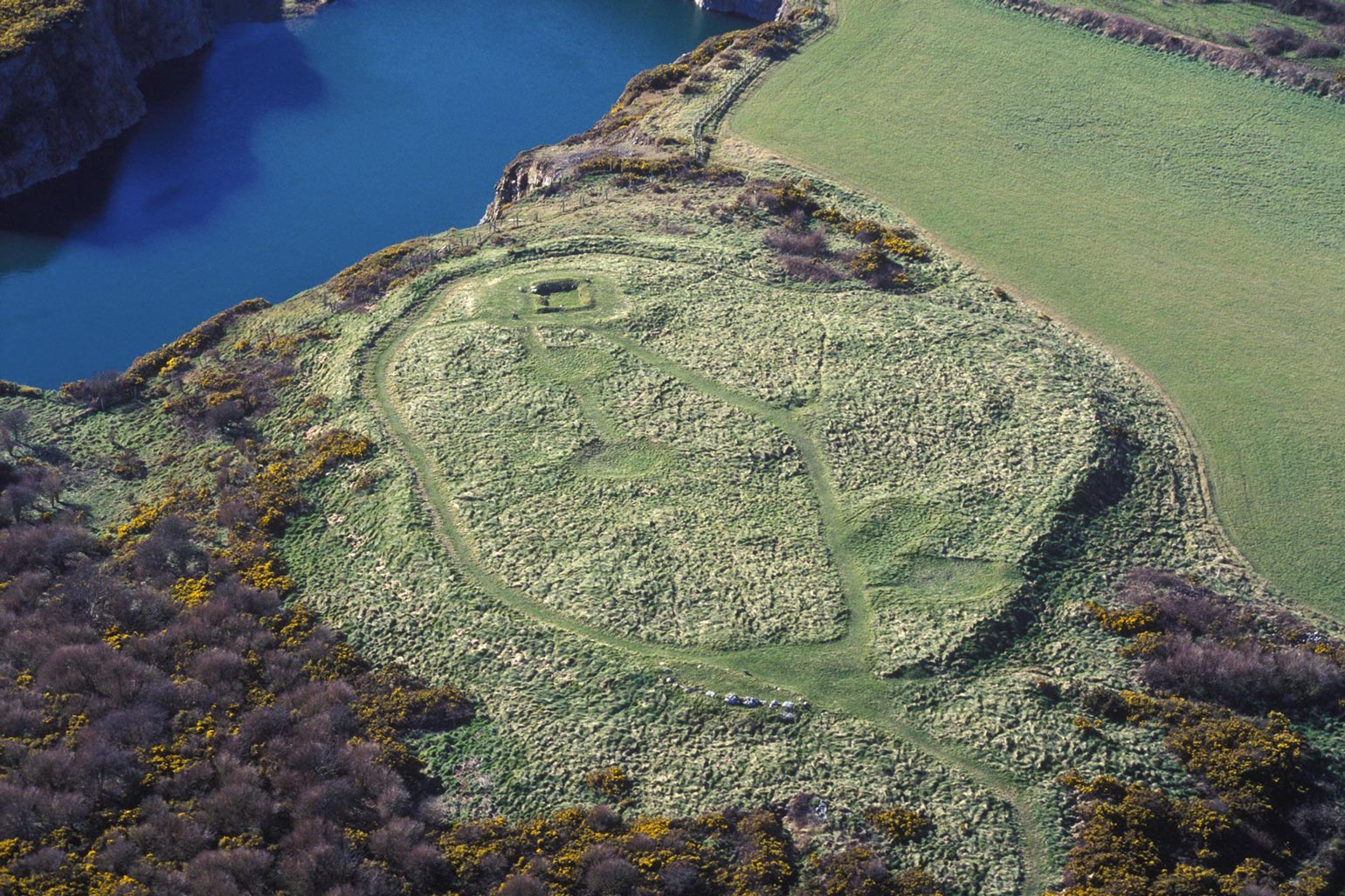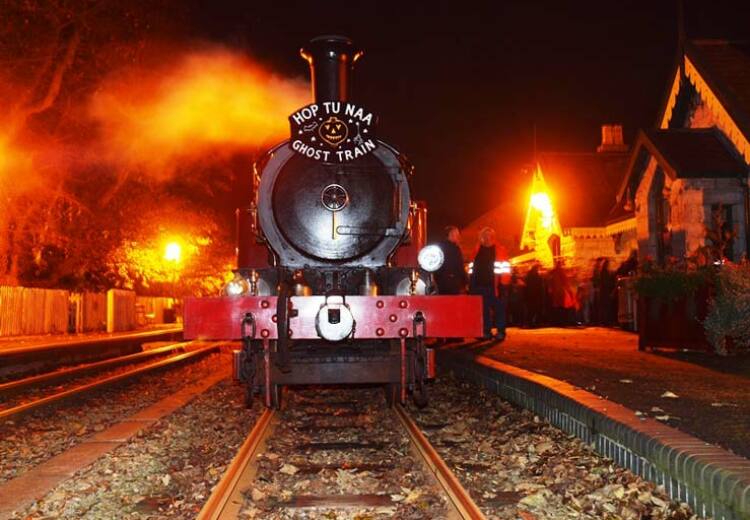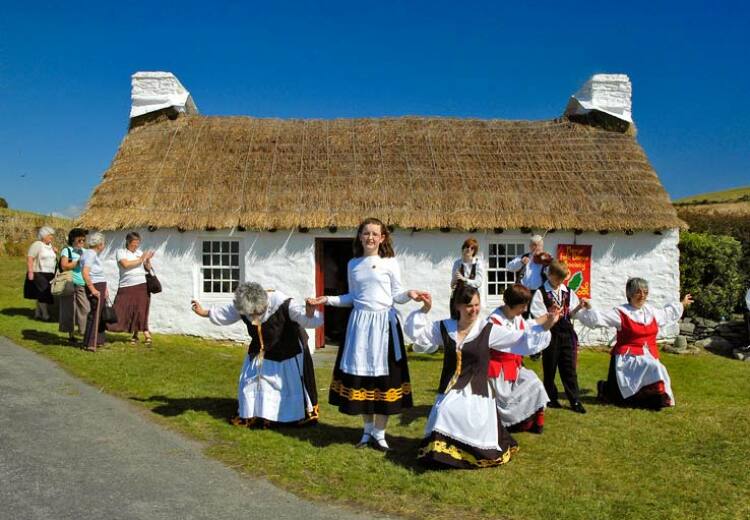
Ancient Welsh kings ruled Mann from the 5th to the 9th century, whereas James Stuart, 7th Earl of Derby, became lord of Mann in the 1600s.
Anaraud Gwalchcrwn
Title: King of Ynys Manaw
Born: c. 650
Son of Mermin Mawr, Anaraud ('Anarawd' in Welsh, 'Anarod' in English and 'Anarodus' in Latin) supposedly inherited his throne in AD 682. Very little is known of his reign other than that he was succeeded by his son Tutgual.
Anllech
Title: King of Ynys Manaw
Born: c. 590
Anllech ('Anllach' in Welsh, 'Anleck' in English and 'Anlacus' in Latin) was the son of King Tutgual and the great grandson of King Neithon - who established an independent monarchy on Man.
During his reign, a war occurred between King Cadwallon of Gwynedd and Edwin of Northumbria into which Anllech's island kingdom was drawn.
In AD 626, Edwin's army occupied the Island and made it a staging post for the invasion of Anglesey. The occupation ended with Edwin's death seven years on, and Anllech was reinstated as king. On his death, the throne passed to his son Cynin.
Guriat
Title: King of Ynys Manaw
Born: c. 750
Guriat ('Gwriad' in Welsh, 'Guriatus' in Latin) succeeded King Elidyr map Sandde.
His best-known memorial on the Island is the famous Crux Guriat (Guriat Cross).
Guriat married Esyllt, daughter and heiress of King Cynan Dindaethwy of Gwynedd.
He was succeeded by his son Merfyn Frych ('the Freckled').
Iudgual
Title: King of Ynys Manaw
Born: c. 690
Iudgual ('Idwal' in Welsh, 'Idovellaunus' in Latin and 'Judwald' in English) was the son of King Tutgual map Anaraud.
Iudgual was the last Island king from the house of Ceretic Guletic, and his failure to produce an heir resulted in the throne passing to his sister Celemion and her husband, Prince Sandde of South Rheghed.
Mermin Mawr ('the Great')
Title: King of Ynys Manaw
Born: c.630
Mermin ('Merfyn' in Welsh, 'Mervin' in English and 'Marbinus' in Latin) succeeded his father Cynin as King.
He was considered a particularly significant monarch on account of his powerful navy, which carried out raids on the Ulster and Leinster coasts.
The Annals of Ulster give the date of his death as AD 683.
Neithon
Title: King of Ynys Manaw
Born: c.530
Neithon ('Nudd' in Welsh, 'Nathan' in English and 'Natanus' in Latin) was the son of King Senyllt.
The loss of Galloway to King Urien of North Rheged meant that Neithon was the first king of an independent Isle of Man.
His son Rhun eventually succeeded him.
Sandde
Title: King of Ynys Manaw
Born: c. 690
Sandde ('Sant' in English, 'Xanthus' in Latin) was a great grandson of King Llywarch Hen and heir to the lost kingdom of South Rheged.
When his wife Celemion inherited Ynys Manaw in the late 8th Century, the family transferred from Powys.
He ruled in his wife's stead and was succeeded by their son Elidyr.
Senyllt mab Dingat
Title: King of Galloway & Ynys Manaw
Born: c. 510
Senyllt ('Senild' in English, 'Seniltus' in Latin) was the grandson of King Tutgual.
It was during his reign, roughly around AD 550, that the Kings of Galloway were expelled from their mainland territory by the North Rhegedians under King Urien.
The defeated dynasty retreated to the Isle of Man, where it is thought they continued to thrive for generations.
Tutgual
Title: King of Galloway
Born: c. 467
Also known by the alternative names of 'Tudwal' (Welsh), Theowald (English) and Theodovellaunus (Latin), Tutgual was born circa AD 467.
As with many details regarding these early monarchs, the lineage of Tutgual is not entirely clear.
He was thought to have inherited a small share of the kingdom of Strathclyde from his father Cinuit, but it was his brother Dumnagual Hen ('the Old') who bore the title King of Strathclyde.
Tutgual was a pagan king who, according to the 'Life of St Ninian' by Aelred of Rievaulx, records that Tutgual opposed the settlement of the saint at Whithorn.
He was succeeded by his son, Dingat.
James Stuart, 7th Earl of Derby
Title: Lord of Mann
Born: 1607
Raised in Knowsley, he became Lord of Man in 1627 following the retirement of his father from most public offices.
Of all the Stanleys, the Isle of Man played the greatest part in James' life - he was a staunch defender of the Royalist cause and resided in the Island in 1643 to preserve it as a stronghold.
James married Charlotte de Tremoille, by whom he had six children. She became famous as the successful defender of Lathom during an extended Parliamentary siege.
However his life was condemned by a Parliamentary Court Martial, and James was killed on the block at Bolton.







